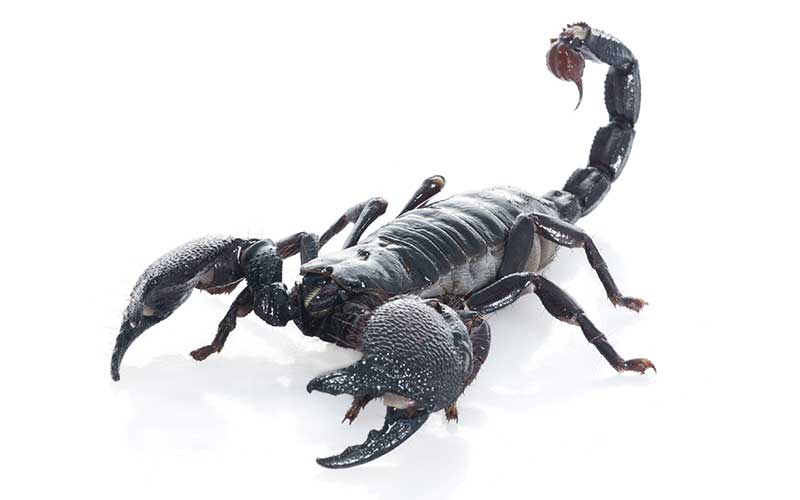Scorpion Breeding
The reproductive cycle of scorpions is fascinating and has unique characteristics not repeated in other arachnids. The following data are treated in a generalized way since some details vary according to each species of scorpions.
The first phase of their reproductive cycle occurs between late spring and early autumn. It all starts with finding a mate. The male leaves his den searching for a mature female available, which can stay inside or outside her hiding place. If it is the former, he prepares to dig the entrance and insist until the partner appears. A combination of pheromones and body vibrations is vital in this phase when the body of both is trembling or vibrating repeatedly.
At first, the struggle between them seems very savage, and the female appears not ready to make physical contact with her new partner, but it is the male who is responsible for calming her with slight doses of venom in the pedipalps or the cephalothorax, although this does not always happen. Sometimes only a little effort is needed without having to use such natural tranquilizers.
A combination of pheromones and body vibrations is vital in this phase.
The courtship is a very unusual and even funny because the male holds the pedipalps of the female to have it under control, and then they begin a kind of “dance” where they walk in all directions. During this part they look like coordinated dance partners that perfectly synchronize; it is fascinating!
Once the male manages to find the right place to deposit his spermatophore on the ground, he then guides the female to stand on it with the aim of introducing it into her genital operculum and thus be able to fertilize. The mating ritual lasts for hours or even days, depending on how long the male takes to deposit his spermatophore. If it takes too long and the female loses interest, the whole process is interrupted.
Sometimes after mating, the male should move quickly away if he does not want to become the next meal of his aggressive female companion.
If the fertilization is successful, the fertile eggs form an embryo until finally, the scorplings arrive. The mother releases them to the outside one by one, and immediately they climb to the body of the mother through its legs to assure that they will not be in danger. The lack of a robust and developed exoskeleton keeps them defenseless and very vulnerable to the attacks of predators, but with the protection of their mother, the risks diminish. As a curious fact, if the mother does not have enough food around her, she feeds on her offspring, turning her from protector to predator.
The reproduction of some scorpions is known as parthenogenesis.
The reproduction of some scorpions is known as parthenogenesis, a form of asexual reproduction where the development of embryos can occur without fertilization.
The scorplings, which on average are 25 to 35 (but much more in certain species), are miniature versions of adults but without a fully developed exoskeleton that they need to survive in their environment. They have a whitish-transparent color and a very soft texture, besides being tiny.
They stay with the mother until they have their first molt, which occurs approximately 50 days after birth. After that, they leave the body of their protector and go out to hunt on their own. They molt five more times before reaching full development. A female can have new offspring sometime between a few months and a year after her last mating.
Some scorpions live surprisingly up to 20 years, but their average life expectancy ranges from 6 to 8 years.
Sources:
Animals, a visual encyclopedia. Second edition. Smithsonian 2012.
Walls, Jerry G. Scorpions: Plus Other Popular Invertebrates. i5 Publishing, 2012
https://en.wikipedia.org/wiki/Scorpion#Reproduction
Vicki Judah, Kathy Nuttall. Exotic Animal Care and Management. Cengage Learning, 2016.
BioExpedition Publishing © 2017.







